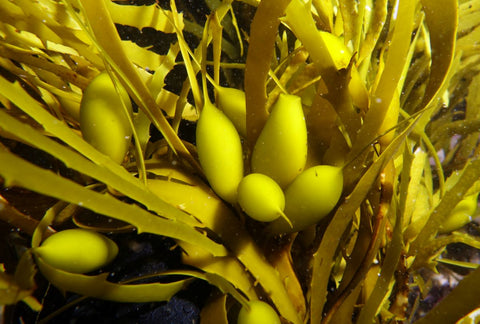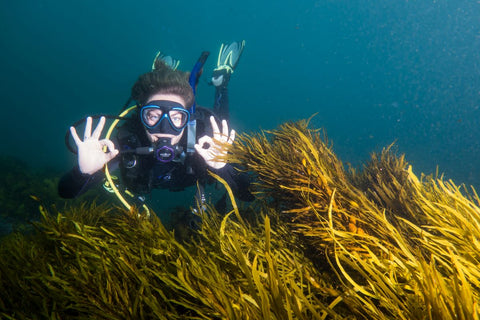For millions of years, crayweed has grown off the coastline of Australia. For as long as anyone can remember, the southeast coastline has been dominated by large forests of crayweed, stretching all the way from Port Macquarie in the north, to Hobart in the south. Its growth had continued uninterrupted, weathering storms, swells and shifting sands.
Thirty years ago, that changed.
All along the 70 kilometres of coastline off metropolitan Sydney, Crayweed vanished. And quickly. Tens of thousands of years disappeared in the space of a decade or two.
Prof. Adriana Verges from the Sydney Institute of Marine Science, and Professor of marine ecology at UNSW joined us from the International Seaweed Symposium in Hobart to explain exactly what went wrong.

“The decline in Sydney was most likely due to sewerage,” she explains. “In the 1980s, sewerage was discharged just off the coastline. In that decade, Bondi beach was closed 50% of the time because of the poor water quality. And it turns out that this kind of pollution is really damaging to young crayweed. They just can’t cope.”
She is at pains to point out that Sydney Water performed a herculean task in addressing this problem, so much so that Sydney now has some of the cleanest water of any cities around the world. “But the crayweed never came back,” she says.
For over twelve years, Adriana has been co-leading Operation Crayweed, an initiative to restore this precious species to the shores of Sydney beaches, along with Associate Professor Ziggy Marzinelli from the University of Sydney. Over that time, it has reversed local extinction of crayweed. “We have restored seven sites along the coastline,” She explains, and her excitement is palpable. “It’s amazing to me that we have reversed local extinction, and there is now crayweed off Bondi beach again. By 2040, we aim to have restored seventeen more sites, and to have restored that domination of crayweed along the coastline.”

If at this point, you’re not entirely sure why such an effort should be made to restore seaweed, then you have missed the importance of seaweed to our everyday lives. Consider this:
- Crayweed has an enormous capacity to capture carbon, and so the larger the forests off our shores, the less carbon floating around our atmosphere.
- Crayweed supports unique epifaunal communities. It gets its name from crayfish (a.k.a rock lobster) which is the most valuable seafood in Australia. It also houses abalone, the second most valuable. As you can imagine, there are millions of dollars and countless jobs riding on the future of local crayweed forests.
- Crayweed also plays a significant role in upholding the delicate balance of the ecosystem. Think of it as a simple equation: More crayweed = more crayfish. More crayfish = fewer sea urchins. Fewer sea urchins = a balanced ecosystem. The moment that balance is disturbed, everything gets out of kilter.
- Crayweed provides habitat for a range of other tiny invertebrates that don’t populate other species of seaweed, yet are critical for a thriving ecosystem.
Clearly, crayweed matters, and something needs to be done. But how do Adriana and her colleagues go about replenishing the populations that have been lost? According to Adriana, it isn’t as difficult as it sounds.
“We aren’t physically replanting giant stretches of crayweed by hand,” she says. “We transplant healthy adult plants from nearby populations and let nature take its course. That little nuclei becomes self-sustaining and spreads outwards. It shows that you just need to give nature a helping hand, a little nudge and it just goes off.”
This is a good news story! And these are often underreported in the news these days. But there is something you can’t miss: Nature often requires this “nudge” once humans have interfered.
“We do community plantings, and we have call outs for volunteers,” she says. All of this can be found on their website, as well as their social media accounts.
OneFishTwoFish is delighted to partner with Operation Crayweed as they provide that little nudge to populations of crayweed off our eastern shoreline.


